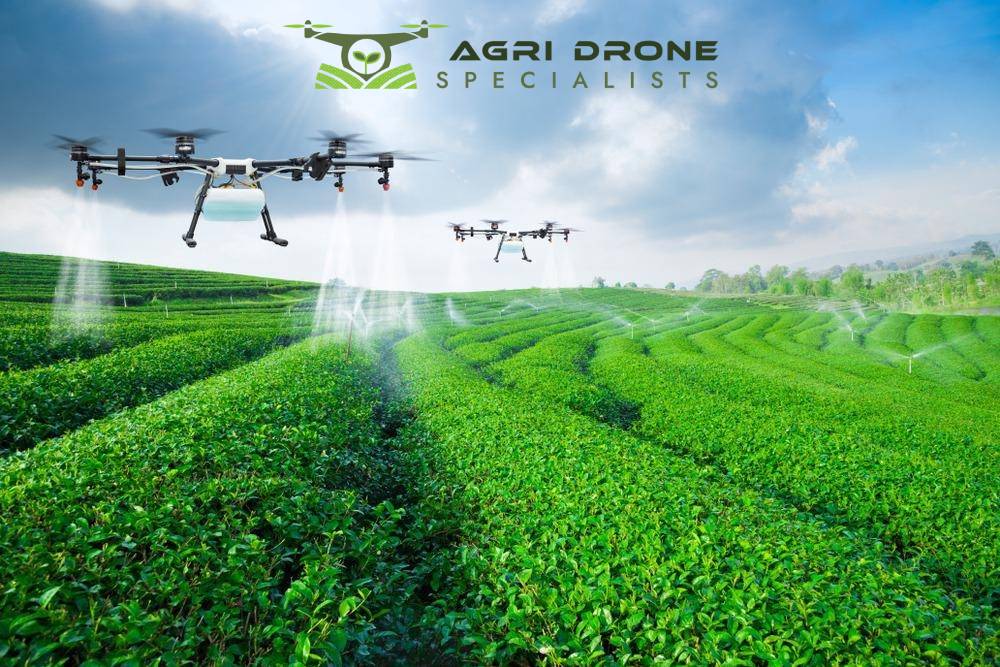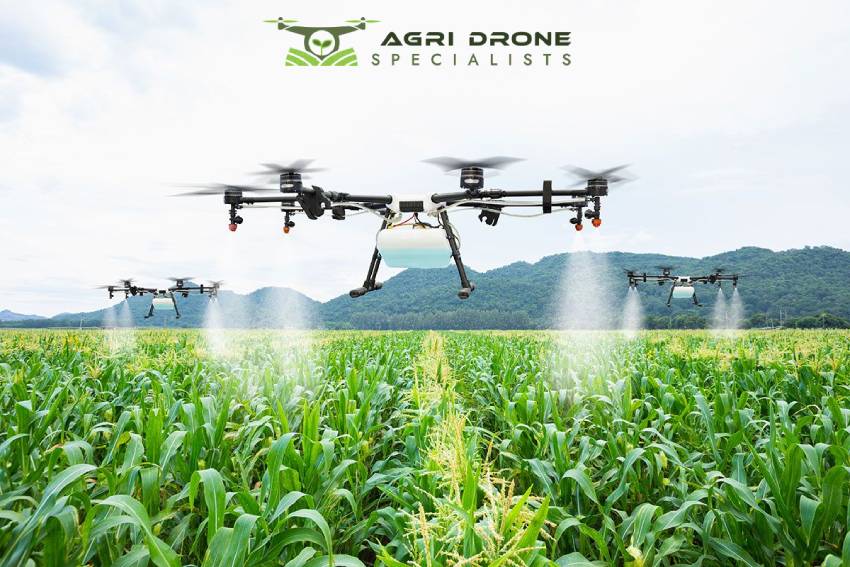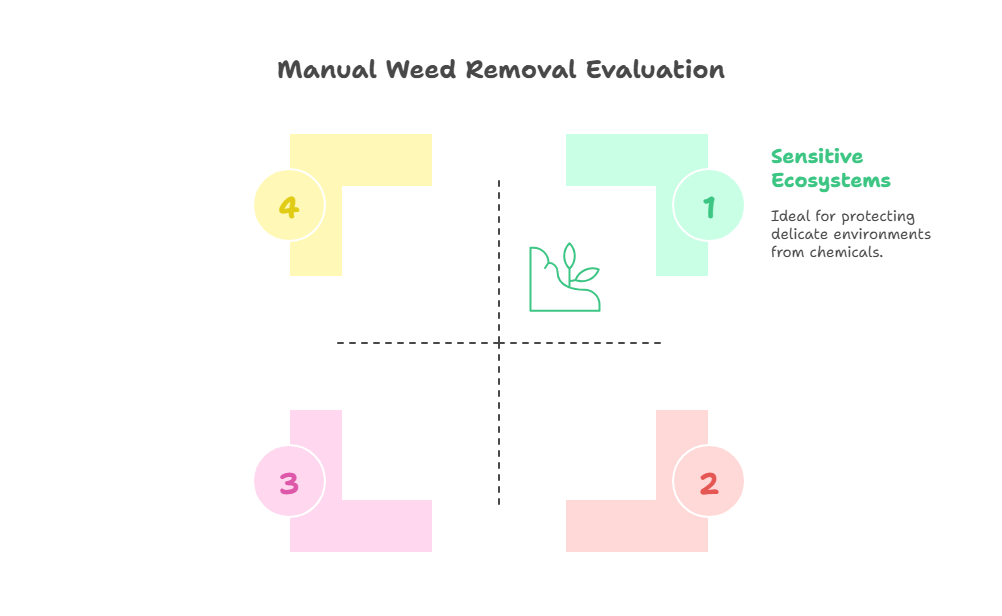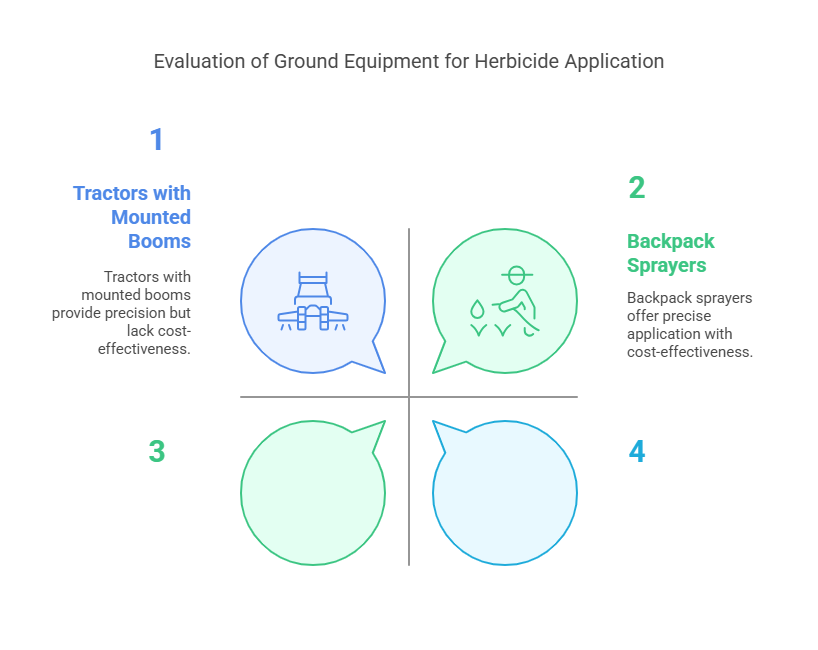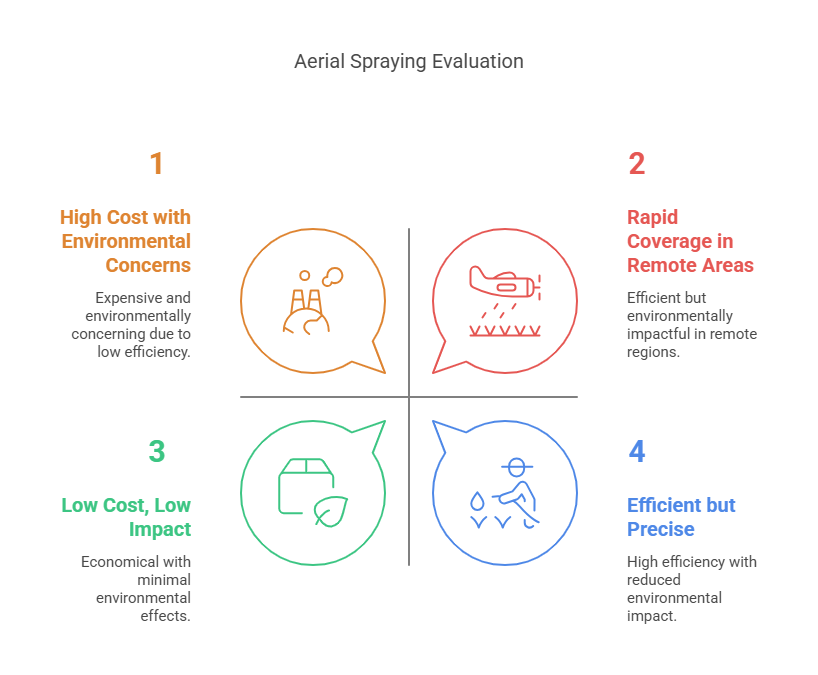Weed control has always been a big part of agriculture, forestry and land management. Invasive plant species like wilding pines threaten native ecosystems and farm productivity, so you need to get control right.
For years farmers and land managers have used manual labour, ground based machinery and aerial spraying by helicopters to control weeds. But with the rise of drone spraying the landscape of weed management has changed significantly.
In this blog we’ll compare traditional weed control methods with Spraying Drone Services and look at their efficiency, environmental impact, cost and overall effectiveness for wilding pine control and other invasive species management.
Traditional Weed Control Methods
Manual Weed Removal
Process: Manual removal involves physically pulling out weeds or using hand tools to cut and dig them out.
Pros: Good for small areas and sensitive ecosystems where chemical spraying is not an option.
Cons: Labour intensive, time consuming and not practical for large infestations. Also risk of regrowth if roots not removed.
Chemical Spraying with Ground Equipment
Process: Herbicides applied with backpack sprayers, tractors or mounted booms.
Pros: Good for localised weed control, relatively cheap for small farms.
Cons: Limited reach, uneven application and risk of herbicide drift on non-target plants.
Helicopter and Fixed Wing Aerial Spraying
Process: Herbicides sprayed over large areas with helicopters or planes.
Pros: Covers a lot of ground quickly and good for forestry management and remote areas.
Cons: High operational costs, chemical wastage, environmental concerns from drift and lower precision than modern technologies.
Grazing Animals for Weed Suppression
Process: Livestock like goats or sheep graze on invasive weeds to suppress growth.
Pros: Natural, cost effective and sustainable in certain landscapes.
Cons: Not all weeds are palatable to animals and overgrazing can lead to soil erosion.
Controlled Burning
Process: Fire used to clear invasive weeds and reset the ecosystem.
Pros: Good for clearing large areas quickly and promote native species regrowth.
Cons: High risk, requires expert handling, potential harm to soil health and limited by weather and fire regulations.
Drone Spraying: A New Way to Control Weeds
How Drone Spraying Services Work
Drone spraying involves the use of unmanned aerial vehicles (UAVs) with precision sprayers. The drones fly over the area and release herbicides with precision, controlling weeds effectively and minimising waste and environmental impact.
Benefits of Drone Spraying over Traditional Methods
Precision and Efficiency
Drones use GPS guided systems and sensors to apply herbicides where needed.
Helicopters and planes can’t fly as close to the ground, herbicide drift is reduced and application is more targeted.
AI powered drones can tell the difference between invasive weeds and native vegetation, no damage to the wrong plants.
Reduced Environmental Impact
Traditional aerial spraying means chemical runoff and non-target exposure to plants and wildlife.
Drones reduce herbicide wastage by applying to only affected areas, minimising environmental contamination.
Lower carbon footprint than helicopters and tractors that run on fossil fuels.
Cost-Effectiveness
Manual weed removal and helicopter spraying is costly due to labour and fuel costs, drones are more affordable.
Farmers and land managers can save on labour costs and get better weed control with less herbicides.
Drones require less maintenance and can be deployed quick, less downtime.
Safety and Accessibility
Traditional weed control methods, manual labour and helicopter spraying have safety risks of chemical exposure, injuries and accidents.
Drone operators can control weeds from a safe distance, reducing chemical handling risks.
Drones can access steep slopes, wetlands and remote forest areas where traditional methods are impractical.
Speed and Scalability
A drone can cover hectares in a short time, ideal for large scale weed control projects.
Technology is scalable, multiple drones can operate at the same time to cover bigger areas.
Faster response time to prevent invasive species from taking over.
Effectiveness in Wilding Pine Control
Wilding pines are hard to control due to their rapid spread and deep-rooted growth.
Manual removal and helicopter spraying often struggle to provide long term solutions.
Drones can target individual trees with precise herbicide application, reduce regrowth and minimal chemical use.
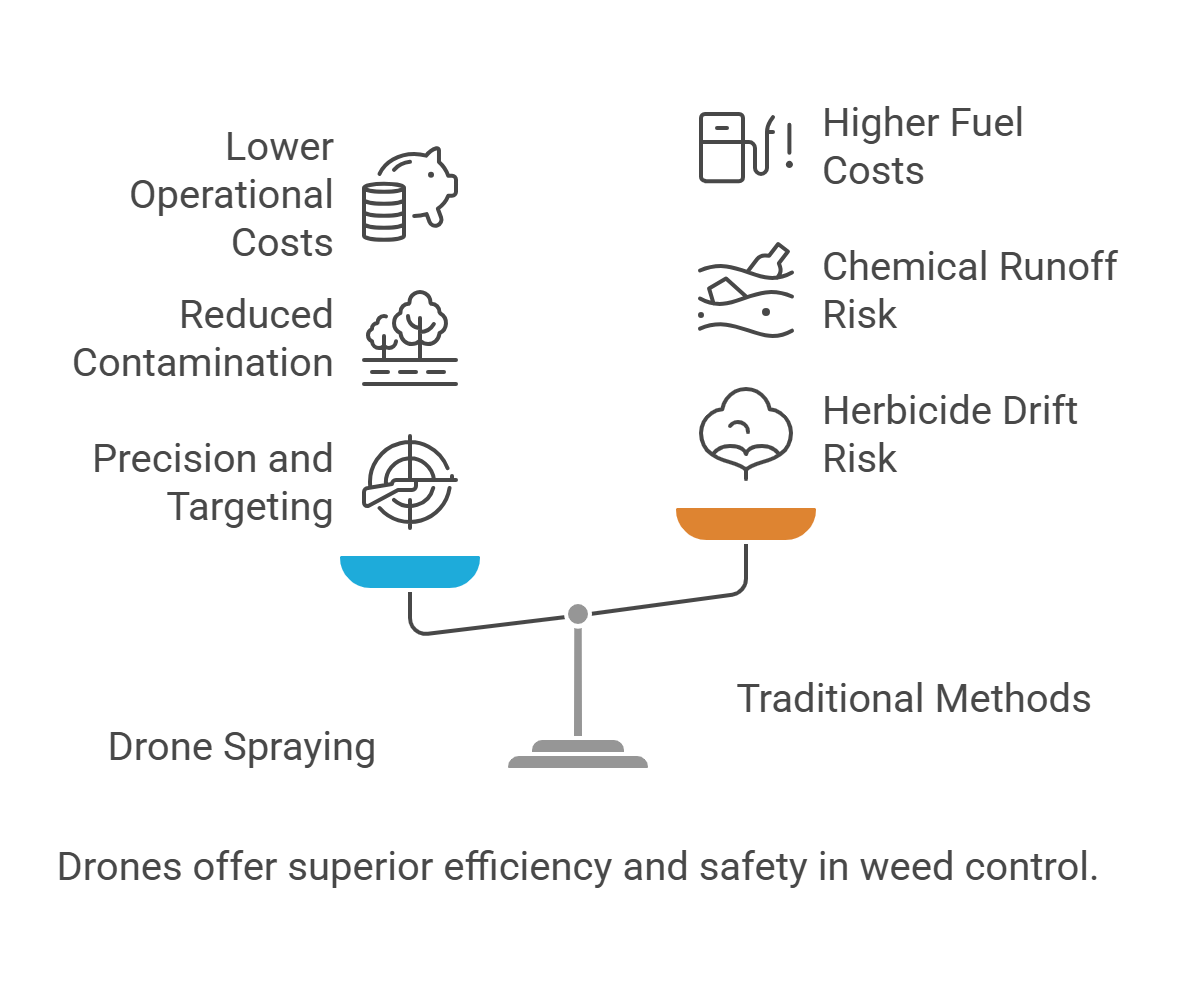
Challenges and Considerations in Drone Spraying
While drone spraying has many advantages, there are challenges to consider:
Regulatory Compliance: Different regions have different laws on drone use for agricultural spraying. Operators must comply with aviation and chemical application regulations.
Initial Investment: While drones will save in the long run, the initial cost of buying high quality UAVs and software is high.
Weather Sensitivity: Strong winds and heavy rain can affect drone efficiency, need to plan and monitor carefully.
Training Requirements: Operators need special training to use drones safely and effectively.
Conclusion: The Future of Weed Control
Traditional weed control methods vs drone spraying shows how far we have come in agricultural technology. While traditional methods still have their place, drone spraying is a game changer for wilding pine control and other invasive species removal.
With precision, cost savings and minimal environmental impact, drones are proving to be a valuable tool for land managers, farmers and environmentalists. As the technology evolves, we will see even more efficiency and innovation in the war against weeds.
Looking for an advanced, sustainable and effective weed control solution? Time to take a look at Spraying Drone Services!

